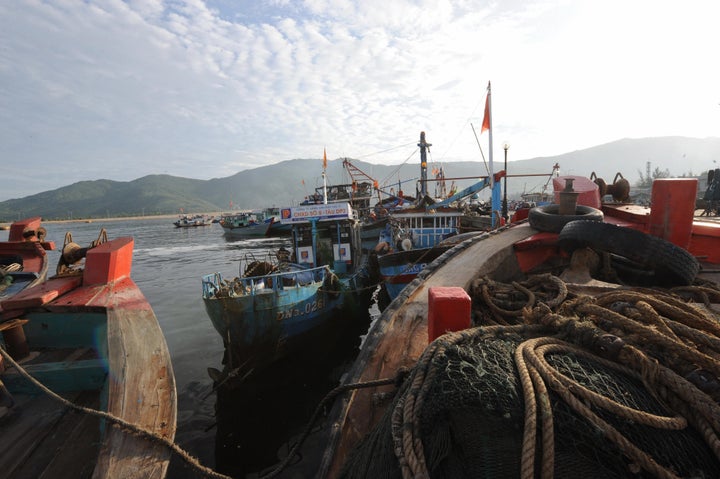
There were major developments in the past few weeks that hold great promise for restoring the health of our oceans, and bringing back an abundance of ocean wildlife. At a time when there's no shortage of bad news about the state of the oceans, it's heartening to have big things to celebrate.
First, respected scientists from two often antagonistic camps -- fisheries management experts and marine ecologists -- reached consensus about how best to bring back the world's ocean fish populations. In a significant paper published in the journal Science, they agreed that while overfishing and environmental change still threaten wild fish populations around the world, there are signs of progress in many places.
And they agreed that several specific steps can help turn the tide. Notably, they point to management techniques like closing some areas to fishing, restricting certain types of fishing gear and giving individual fishermen a share of the annual catch.
They also acknowledge that it will take political courage to adopt these measures, especially when they cause short-term harm for fishermen -- many of whom are already suffering from the impacts of declining catches and increased fishing restrictions. In California, for example, commercial fish landings have declined by two-thirds since 1981, from 795 million pounds to only 262 million pounds in 2003, and by more than 50 percent in value, to just $129 million in 2003.
That's where the second piece of good news comes in. On August 5, the state Fish and Game Commission approved a second set of marine protected areas along the California coast. It established 22 zones from Half Moon Bay to Mendocino County (waters north and south of San Francisco) in which fishing will be limited to some degree. Of those, 13 areas representing 11 percent of state waters in the region will be fully protected. Two years ago the Central Coast, including state waters in Monterey Bay and the Big Sur coast, received similar protection.
The vote was controversial because, as the researchers said in their Science paper, the immediate result could be short-term economic pain before the long-term gain.
The fact remains that many respected fisheries scientists believe that using diverse management strategies, including fully protected marine reserves, are essential if we hope to have a future with a healthy fishing industry, and healthy ecosystems that support ocean life: the kind we catch, the kind we watch, and the plants and animals that make life on Earth possible for people.
Those same scientists agree that California has some of the best-managed ocean waters in the world. But they say it isn't enough just to manage fisheries, as fisheries. We must manage ocean ecosystems in all their diversity, because healthy ecosystems create the abundance of fish on which fishermen depend for their livelihoods.
There's a growing body of science in California and around the world documenting conclusively that marine reserves do what they're supposed to do: restore and maintain fish populations, and increase and protect biodiversity and the ecosystem services that we all depend on.
In California's Channel Islands, five years after creation of marine protected areas there, scientific surveys find more fish species inside reserves than outside, an average of 2.6 times more biomass of predatory fish, and more stable habitats for all marine life.
The key is striking the proper balance between preserving ecosystems and preserving the jobs of people until the fish inside protected areas produce enough offspring to repopulate depleted waters outside the reserves.
California's Marine Life Protection Act offers just such a system. Marine protected areas are proposed by regional citizen groups representing all affected stakeholders -- from scuba divers and ardent conservationists, to commercial fishermen and recreational fishing advocates.
Each proposal is reviewed by marine scientists and the state Department of Fish and Game to make sure it will effectively preserve critical ecosystems. In the end, each must be adopted by the governor's appointed Fish and Game Commissioners.
The oceans are incredibly resilient. Given a chance to recover, they can produce a remarkable abundance of marine life -- much more than we see today.
We can reverse the steady decline -- and we're doing so. In Morro Bay, California, fishermen and conservation groups are taking a new approach to fisheries management, with the aim of preserving local fishing heritage and developing a more sustainable fishery. Statewide, the California Fisheries Fund partners with fishermen and port officials while offering loans to support communities that want to improve the sustainability of their fisheries.
In the state legislature, a bill (AB 1217), sponsored by the Monterey Bay Aquarium and authored by Assemblymember Bill Monning, would provide marketing assistance and other incentives to help sell more sustainably caught California seafood.
Marine protected areas are an important piece of the puzzle. We must address other threats, too, like the impact of pollutants flowing from the land, and of carbon dioxide that the ocean absorbs from our use of fossil fuels for cars, factories and power plants.
But we're demonstrating the courage to begin the process. And that's good news for everyone who cares about the oceans.